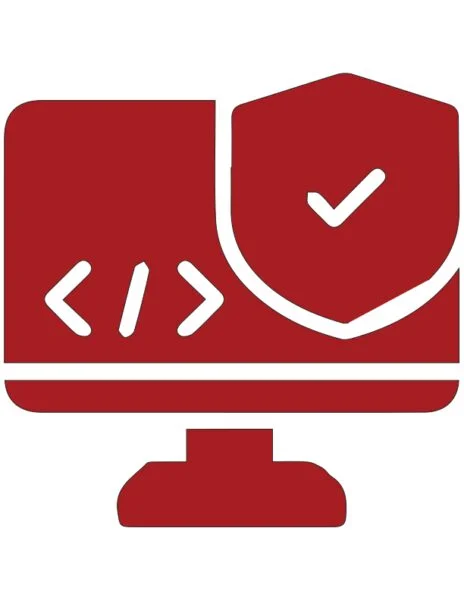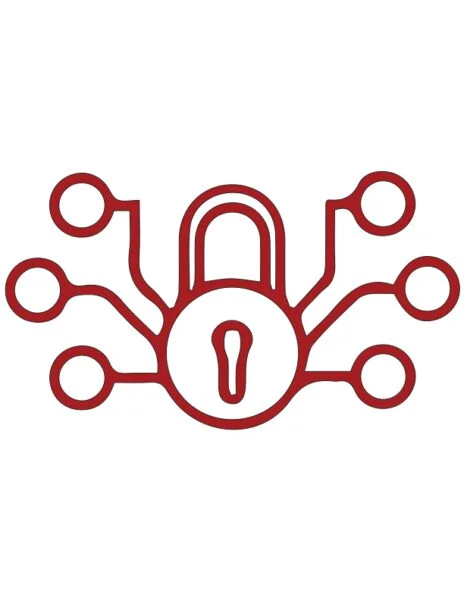VAPT is an essential cybersecurity practice that helps organizations to identify and address vulnerability in their information systems. By conducting a VAPT, businesses can enhance their security posture, avoide the risk of cyber threats, and safeguard sensitive data. This article explores the various outcomes of VAPT, highlighting its significance in today’s digital landscape.
The primary outcome of VAPT is the identification of vulnerabilities within an organization's network.
Once vulnerabilities are identified, the organization can take immediate steps to mitigate these risks and ensure security
VAPT helps organizations enhance their overall security posture. By identifying and rectifying vulnerabilities.
Many industries require organizations to adhere to specific cybersecurity regulations.
VAPT goes beyond identifying vulnerabilities. It also fosters a culture of security awareness within your organization. By partnering with pen testing companies to conduct network penetration testing (or pen testing) and simulate real-world attacks, employees witness firsthand the potential consequences of security lapses. This heightened awareness translates into:
Improved Security Practices: Employees become more conscious of best practices like strong password hygiene and avoiding suspicious links.
Reduced Risk of Human Error: A more security-aware workforce is less likely to fall victim to social engineering attacks or click on malicious content. Stronger Security Culture: VAPT paves the way for a proactive security culture where everyone protects the organization’s digital assets.
By empowering employees with security knowledge, VAPT strengthens your organization’s defenses from both internal and external threats.



Proactive defense is key in cybersecurity. VAPT, by combining vulnerability assessments with penetration testing (or penetration assessments), helps identify and address weaknesses before they can be exploited. This proactive approach offers significant cost savings compared to the aftermath of a data breach.
Consider the expenses associated with:
Incident Response: Mitigating a breach requires immediate action to contain the damage and recover lost data.
Legal & Regulatory Fines: Data breaches can lead to hefty fines and legal repercussions.
Reputational Damage: Loss of customer trust can have a long-lasting negative impact on your brand.
VAPT, including automated penetration testing tools, helps you avoid these costs by preventing breaches in the first place. By investing in VAPT upfront, you can:
Minimize Losses: Prevent costly financial repercussions.
Maintain Trust: Protect your reputation and ensure customer confidence.
VAPT offers a cost-effective way to fortify your defenses and ensure the long-term security of your organization.



VAPT goes beyond just identifying vulnerabilities. It also acts as a drill sergeant for your incident response team. By simulating real-world attack scenarios (like those performed during pen testing or network penetration testing), VAPT exposes weaknesses in your security posture and how your team responds to them.
This valuable insight empowers you to:
Refine Incident Response Procedures: Identify gaps in your current plan and develop more effective protocols.
Enhance Team Training: Provide your security team with hands-on experience to strengthen their response capabilities.
By undergoing a VAPT simulation, your team can gain the experience and knowledge to effectively respond to real-world security incidents, minimizing damage and downtime.


VAPT can pinpoint vulnerabilities in applications and software to secure your development practices.



VAPT should not be a one-time activity but part of an ongoing cybersecurity strategy for continuous improvement.
VAPT reports can be invaluable for compliance reporting, offering a comprehensive view of security measures.
A robust VAPT program contributes to business continuity by proactively identifying vulnerabilities that could disrupt operations and ensure continuity.
VAPT can foster a culture of security within an organization when employees see a commitment to thorough testing and proactive vulnerability remediation.
VAPT can provide legal and regulatory protection. In some cases, organizations that can demonstrate due diligence in identifying.

In today’s digital landscape, a robust cybersecurity posture is paramount. Vulnerability Assessment and Penetration Testing (VAPT) offers a comprehensive approach to identifying and addressing vulnerabilities before they can be exploited. However, the benefits of VAPT extend beyond just protecting your systems.
Enhanced Cyber Insurance Benefits:
Many insurance providers consider a well-defined VAPT program a positive factor when evaluating cybersecurity insurance applications. This translates to:
Easier Coverage Acquisition: A VAPT program demonstrates your commitment to proactive security, making it easier to secure coverage.
Reduced Premiums: You may qualify for lower insurance premiums by demonstrating a lower risk profile.
Vulnerability Assessment and Penetration Testing (VAPT) is a cornerstone of a robust cybersecurity strategy. It offers a comprehensive approach to identifying and addressing vulnerabilities before attackers can exploit them. But VAPT’s benefits extend beyond just prevention:
Enhanced Incident Detection: While VAPT is primarily preventive, it can also play a valuable role in incident detection. During simulated attacks, security professionals can discover previously unknown security vulnerabilities that might have gone unnoticed. This early detection allows for a swifter response to contain and mitigate potential damage from a cyber incident.
Improved Security Posture & Insurance Benefits

The outcomes of Vulnerability Assessment and Penetration Testing (VAPT) are twofold: identification and mitigation. Firstly, VAPT uncovers potential weaknesses and vulnerabilities in a system or network, providing a comprehensive understanding of potential security risks. Secondly, it enables organizations to proactively address and remediate these vulnerabilities, fortifying their cybersecurity posture. Ultimately, VAPT enhances overall resilience, reduces the risk of cyber threats, and ensures a robust security framework for businesses and their critical assets.
Vulnerability testing offers several critical benefits for organizations. Firstly, it helps identify potential security weaknesses in software, networks, or systems, allowing proactive mitigation before malicious actors exploit vulnerabilities. This process enhances overall cybersecurity, protects sensitive data, and safeguards the organization’s reputation. Additionally, vulnerability testing assists in compliance with industry regulations and standards, fostering a robust security posture. Ultimately, investing in regular vulnerability testing is a strategic measure that fortifies resilience against evolving cyber threats, ensuring long-term business continuity and trust.
VAPT strengthens your overall security posture by:
Identifying & Remediating Vulnerabilities: Patch security holes before they can be exploited.
Enhanced Team Training: Security teams gain experience responding to simulated attacks, improving their preparedness for real-world incidents.
Bolstered Insurance Coverage: A VAPT program demonstrates your commitment to proactive security, making securing favorable cyber insurance coverage easier and potentially reducing premiums.
Vulnerability is essential for personal and professional growth as it fosters resilience, adaptability, and learning. Embracing vulnerability allows individuals and organizations to acknowledge limitations, identify areas for improvement, and cultivate a culture of continuous development. It catalyzes innovation, promoting a mindset that encourages openness, collaboration, and the courage to confront challenges. In essence, vulnerability is a gateway to progress and success in both individual and collective endeavors.
Yes, vulnerability is indeed a risk, especially in the context of cybersecurity and personal relationships. In cybersecurity, vulnerabilities in systems can be exploited by attackers, leading to breaches and data compromise. In personal relationships, opening up and being vulnerable can be a risk emotionally, but it also fosters connection and understanding, ultimately contributing to personal growth and stronger connections. Balancing vulnerability with appropriate safeguards is crucial in both contexts.
© Copyright 2024 ITBUTLER. All Rights Reserved.
Keeping track of domain registrations to identify and mitigate phishing sites or domains that mimic the brand.